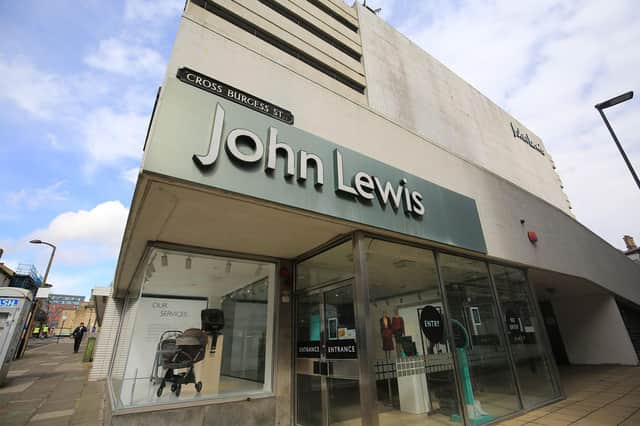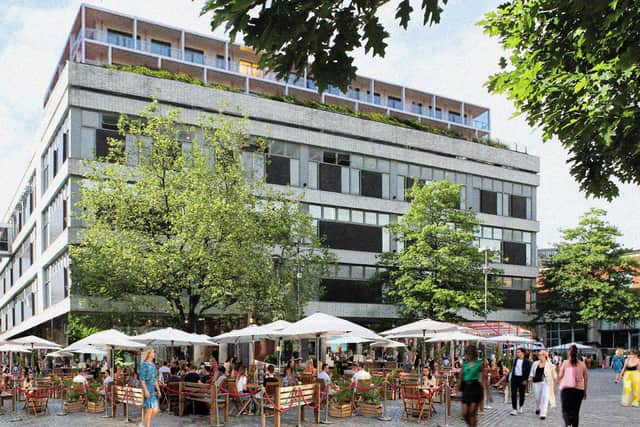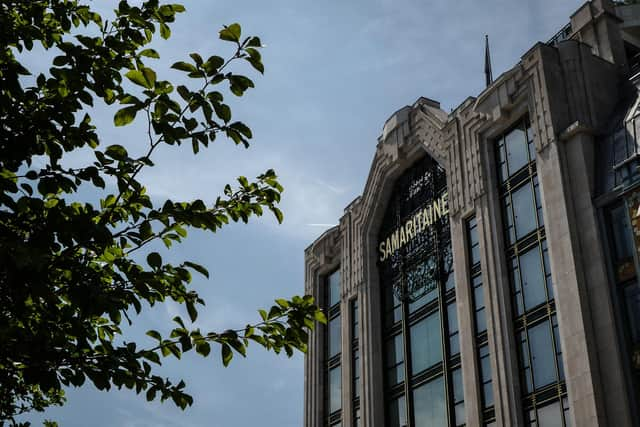'Six months after Sheffield's John Lewis closed - its high time to start the debate about its future'


An agreement was also expected in the summer about the compensation that John Lewis will pay the Council for breaking their lease, and negotiations are apparently ongoing. It’s important these talks aren’t rushed, and that the city gets what it is owed from a company that has now returned to profit. However, in the meantime let’s not wait any longer to start the conversations about this vital and rapidly-changing part of the city centre.
Across the UK and further afield, department stores are being re-imagined in exciting ways - not demolished but re-configured for life beyond retail. In June the La Samaritaine department store in central Paris reopened after extensive renovation. It now contains new retail space but also a hotel, offices, a nursery and the building was extended upwards. Three new floors now contain 96 publicly owned apartments. If Paris can have low-cost, affordable homes at the heart of one of the world’s most expensive cities, why not Sheffield?
Advertisement
Hide AdAdvertisement
Hide AdIn London plans have been approved for the former flagship Debenhams on Oxford Street. The building will be stripped back to its frame with new storeys and roof terraces added. The amount of retail space will shrink with new offices added above. In the Netherlands, there are plans to convert Eindhoven's Heuvel shopping centre into a music venue and leisure destination. The project brings together retail, culture and recreation, expanding the existing building while transforming the roofs into a park. And in Coventry there are exciting plans to convert a former city centre Ikea store into a large new art gallery.


These are just a few examples from the last few months. They show how department stores can - and are - being reused in new ways. They also remind us that if we’re serious about tackling climate change, retrofitting our existing buildings is a key part of meeting our commitments to net zero emissions.
But an even bigger advantage that we have in Sheffield compared to these other cities is that we now own the John Lewis building. We shouldn’t forget this important fact. The city is in the driving seat. So let’s get going.
Earlier in the year, we put forward some initial ideas for the building’s re-use. One of our ideas was to extend upwards to add new affordable housing just like in Paris. Another was to relocate some of the city’s art collections and the Central Library into the building. Sheffield Museums have done a terrific job to refresh the spaces in Graves Gallery so that more of the city’s impressive art collection can be displayed. But Graves is a prime example of a gallery that deserves a much more accessible home.
Advertisement
Hide AdAdvertisement
Hide AdSo a consultation should look hard at all of the new opportunities that the John Lewis building presents. It has large floors, escalators, accessible entrances and high ceilings all are features that suit gallery and performance spaces. Could the building house a new modern Central Library and City Archives too? Why not? Here too, there are precedents to learn from. Back in the 1970s the city of New York opened a public library in central Manhattan in a former branch of Arnold Constable & Co. the first department store chain in the US.


A new arts and cultural hub in Barkers Pool in a building feels like a good fit to us. Especially if it could also provide a home for different forms of retail space, places to meet, eat and drink, and for new homes to help draw in the footfall and consumer spending that the city centre needs. It would also connect the building to other civic buildings and public spaces - the City Hall, Winter Gardens and Millennium Galleries - and to the new Cambridge Street and Fargate that are fast taking shape.
Moving art and cultural facilities into the building would also be in keeping with how our spending habits change over time. Over a hundred years ago J.G. Graves made his fortune from new innovative mail order catalogues before donating much of his wealth to the city. Today John Lewis closed its doors because of online shopping. Retail is always changing. Department stores come and go but these highly adaptable buildings take on new uses. Our high streets and city centres evolve.
For years John Lewis kept the city in the dark about it's plans before letting Sheffield down. Now that the building is in public ownership we’re not waiting on anyone else. We can learn from other cities but the best plan for Sheffield will be one that meets our needs and is shaped by Sheffielders - and that will take time. It’s better to get it right than to rush to get a plan in place by Christmas. But it is time for the Council to get the debate started.
So, what do you think should happen next?
Tom Hunt is a researcher at the University of Sheffield. Adam Park is a local architect and researcher. Both write in a personal capacity.